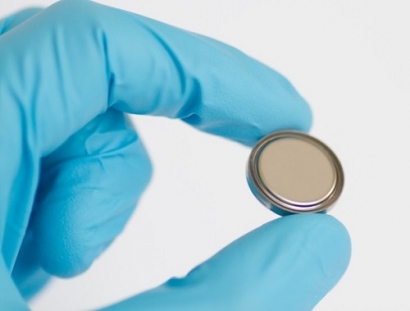
The electrolyte fluid in aluminum batteries is extremely aggressive and corrodes stainless steel, and even gold and platinum. Scientists have been searching for corrosion-resistant materials for the conductive parts of these batteries and Kovalenko and his colleagues at Empa have found that titanium nitride, a ceramic material that exhibits sufficiently high conductivity, is resistant to this corrosion. “This compound is made up of the highly abundant elements titanium and nitrogen, and it’s easy to manufacture,” explained Stephan Buecheler from Empa.
The scientists have successfully made aluminum batteries with conductive parts made of titanium nitride in the laboratory. The material can be produced in the form of thin films, also as a coating over other materials such as polymer foils. Kovalenko believes it would be possible to manufacture the conductors from a conventional metal and coat them with titanium nitride, or even to print conductive titanium nitride tracks on to plastic.
The second new material Kovalenko and his team have found is a material that rivals graphite in terms of the amount of energy a battery is able to store. Polypyrene, a hydrocarbon with a chain-like (polymeric) molecular structure, proved to be ideal. “A lot of space remains between the molecular chains. This allows the relatively large ions of the electrolyte fluid to penetrate and charge the electrode material easily,” Kovalenko stated.
One of the advantages of electrodes containing polypyrene is that scientists are able to influence their properties, such as the porosity. The material can therefore be adapted perfectly to the specific application.
As both titanium nitride and polypyrene are flexible materials, the researchers believe they are suitable for use in pouch cells, which are batteries enclosed in a flexible film.
Batteries based on aluminum are seen as a promising option for stationary power storage in the future. However, such batteries are still at the research stage and have not yet entered industrial use.
Photo: The researchers produced aluminum button cells in the laboratory. The battery case is made of stainless steel coated with titanium nitride on the inside to make it corrosion resistant. (Empa / ETH Zurich)

